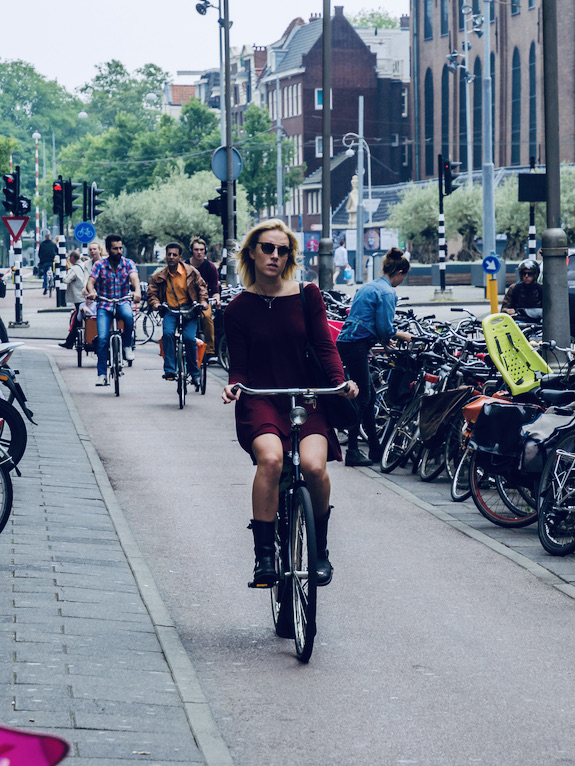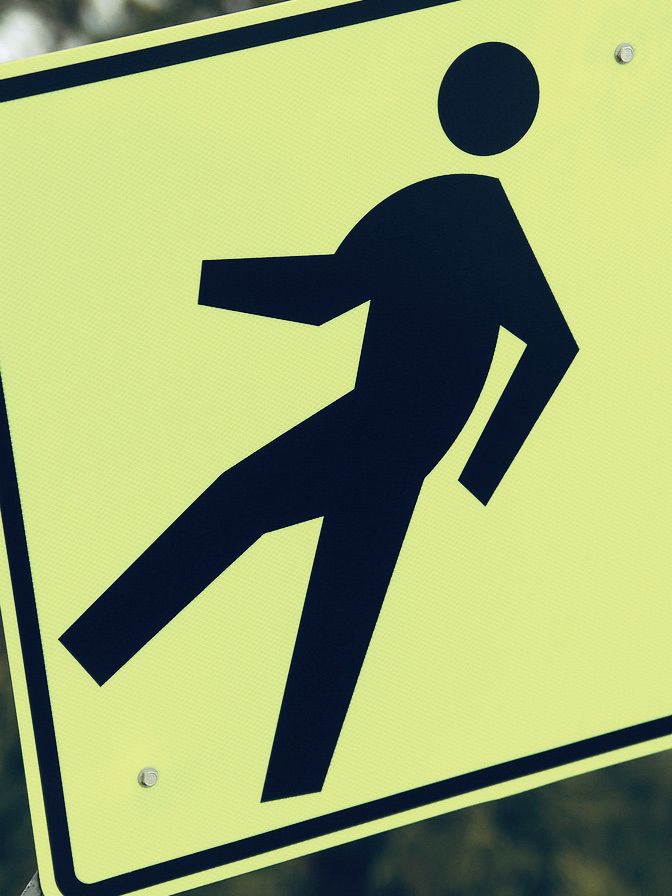Bystanders
“Bystanders” are the people who interact with micromobility. These include any other road or sidewalk users, including pedestrians, drivers, other micromobility users, and automated/autonomous vehicles. Each type of bystander will have unique experiences interacting with micromobility, and will have different needs and responsibilities.
Bystanders include any other road or sidewalk users, including pedestrians, drivers, other micromobility users and automated/autonomous vehicles.
Safety is obviously a primary concern for bystanders. Recent reports on e-scooter related injuries showed that while bystanders do suffer injuries, they are generally less severe and less frequent than those of riders. Fatalities are also less common for bystanders than riders. Of the 36 e-scooter-related fatalities that have occurred since 2016, only two of the victims were non-riders. Unpredictable and unexpected behaviors by both riders and bystanders can lead to confusion. However gaps exist in defining the behavioral expectations for both riders and bystanders, and without well-accepted expectations about what behavior is appropriate, it is difficult for anyone to behave in a predictable manner.

Other Micromobility Users
E-scooter laws are often modeled after existing cycling laws, meaning there is competition for the often limited (and sometimes non-existent) protected space to ride. Because of this, in many areas, other micromobility users (such as cyclists), must interact with e-scooters in roadways, protected bike lanes, and sidewalks. This situation is worsened when micromobility devices are parked in a way that obstructs bike lanes, which can be dangerous for riders. Most cities now provide contact information to have e-scooters removed (often even integrated 311 services), but this is not helpful in the immediate moment to a cyclist who must maneuver around the obstacle. While micromobility users may benefit from the infrastructure additions made possible by e-scooter integration, sharing that infrastructure with e-scooter riders poses its own challenges.
All types of transportation users need infrastructure, including micromobility riders. The safest place for micromobility users is in dedicated, preferably protected lanes (currently bike lanes). Micromobility users also need to know what to expect from other infrastructure users, and how they themselves are expected to behave.
Above all, micromobility users are responsible for behaving in a predictable manner, so that other users of the transportation infrastructure know what to expect. This means not only following the current rules in the area, but clearly indicating intentions using body language. It also means micromobility riders should avoid any sudden changes. In some cities and states, there are laws requiring hand signal use while cycling. While many people do not know when or how to use hand signals, or how to interpret the hand signals they see, they are a good communication tactic for micromobility. Another important responsibility of micromobility users is parking. These regulations vary by jurisdiction, with some cities requiring that they be parked upright on the sidewalk and not blocking access for other sidewalk users, others using corrals, and still others using lock-to mechanisms to require devices be locked to certain types of infrastructure (such as bike racks).
Pedestrians
For pedestrians, interacting with micromobility can be difficult. The problems range from minor annoyances such as e-scooters blocking the sidewalks, to deadly collisions as was the case for a woman in Barcelona who lost her life due to a collision with an e-scooter.
As the most vulnerable transportation infrastructure users, pedestrians should be the most protected. Pedestrians need to know what to expect from e-scooters, both when they are in use, and when they are parked. Pedestrians should be able to understand where e-scooters are able to ride, how fast they are likely to move, and where they are likely to be parked. One major concern by pedestrians has historically been the sidewalk clutter associated with e-scooter use.
When interactions occur, pedestrian’s should clearly communicate with e-scooter riders in the same way they would with a cyclist. These communications are often non-verbal, and sometimes only consist of acknowledgement in the form of eye contact or other body language. They should behave predictably and responsibly. Behaving predictably for a pedestrian means clearly indicating intentions through body language, and avoiding sudden changes in direction or stopping.


Motor Vehicle Drivers
Motor vehicle drivers are a unique group of bystanders because they are typically not at risk of injury from e-scooter riders. However, they are at risk of causing harm or death to e-scooter riders. Of the 36 identified e-scooter fatalities, 27 involved a motor vehicle. Motor vehicles are also at risk of property damage which can occur whether drivers are in their vehicles or not (e.g. e-scooter riders can hit parked cars).
Like the other types of bystanders discussed here, drivers need predictability from e-scooter riders. In many areas, the laws for e-scooters are modeled after cyclists, which makes predictability easier since drivers should already be familiar with the expected behaviors and be able to transfer and apply that knowledge to e-scooters. Drivers also need to know where they can expect to encounter e-scooters. Where e-scooters are allowed to ride differs by area, and since drivers may travel great distances, a driver might pass through places with widely differing rules on a single trip.
To have appropriate expectations, it is important that drivers understand the rules regarding e-scooters in each location. They should expect that e-scooter riders are vulnerable road users and know to treat them with the same caution afforded to cyclists or pedestrians. Knowing where e-scooters will go can be challenging. While hand signals exist for cyclists, these are not consistently used by e-scooter riders. Scooter provider Veo has integrated turn signals into their devices, but this is not the norm. Given this lack of established communication methods, it is important to go slow, give e-scooter riders plenty of space, be predictable, and expect the unexpected. For drivers, being predictable means clearly indicating intentions using signals, following speed limits and other rules, and avoiding sudden behaviors such as stopping or changing direction.
Community members
Even people who never encounter e-scooter riders may be impacted by their presence in the community. The integration of shared e-scooters may have positive or negative impacts on the environment, the job market, and how the transportation budgets are allocated. Not only are the actual impacts important, perceptions of the impacts (which may not always be based in fact) are also important.
Community members need to have access to clear information regarding what changes might occur and where. Integration of e-scooters into the transportation infrastructure can seem overwhelming when many devices are deployed.
Community members are responsible for keeping up-to-date with changes in their community transportation systems, and voicing concerns.

